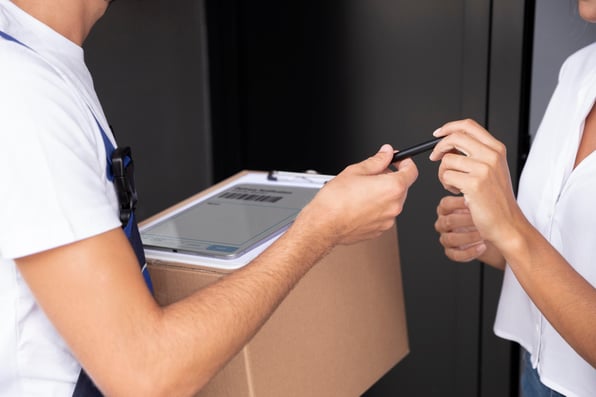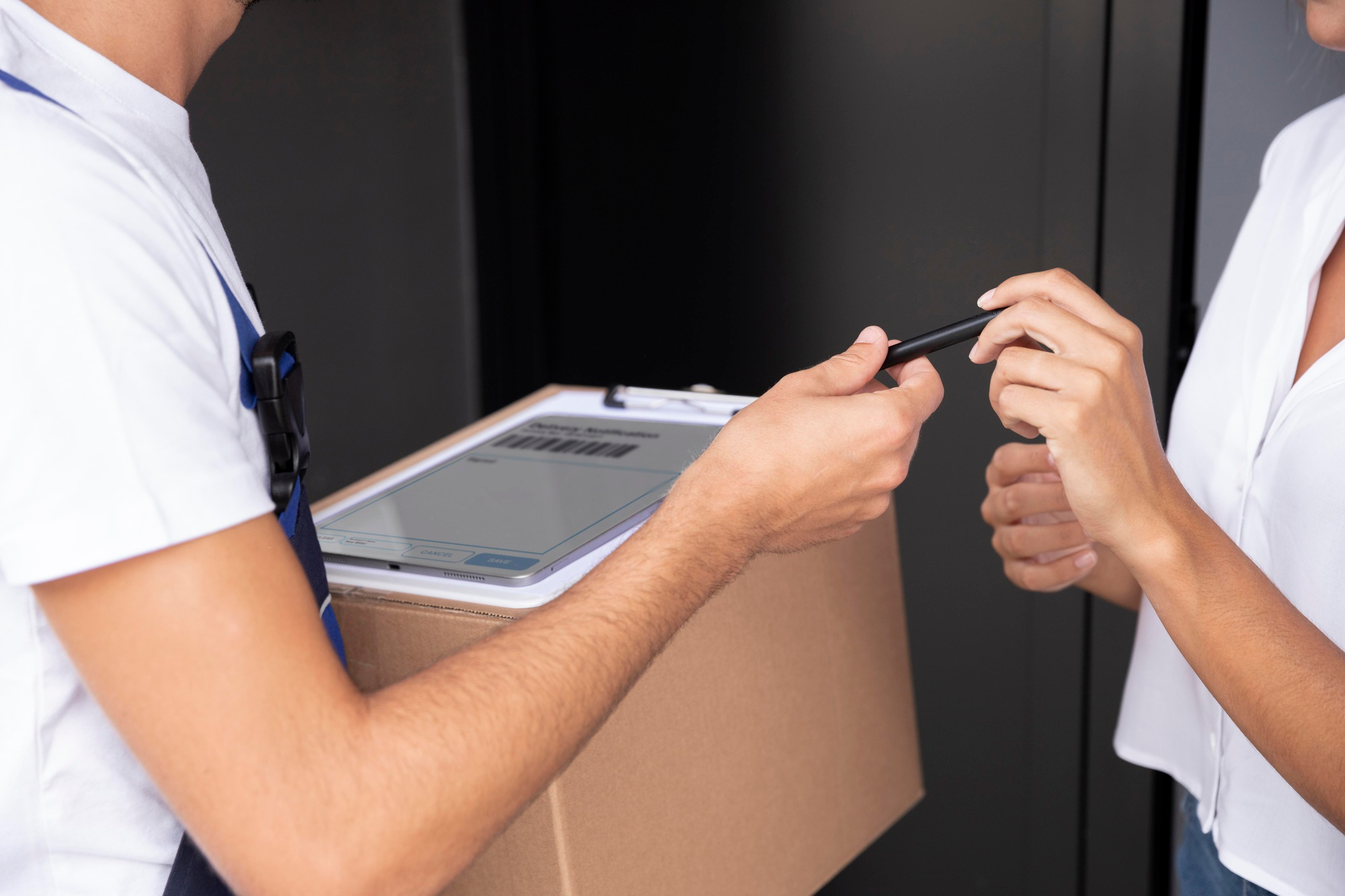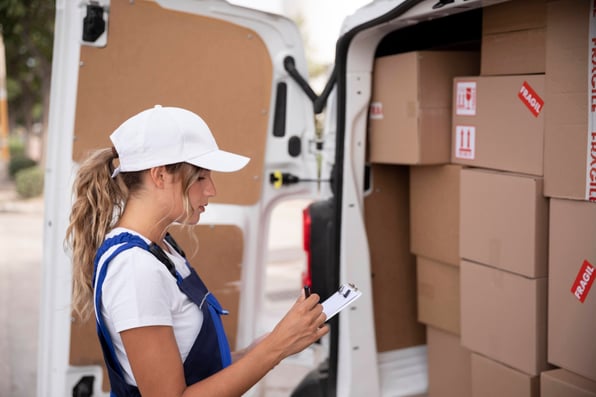
📦 Proof of Delivery (PoD), The Backbone of Trust in Modern Logistics
Ciprian Chiripuci

In today's fast-paced logistics landscape, ensuring that goods reach their intended recipients accurately and efficiently is paramount. Proof of Delivery (PoD) serves as the linchpin in this process, offering verifiable evidence that a delivery has been completed successfully. Whether it's a signature, a photograph or a timestamped digital record, PoD provides the transparency and accountability that businesses and customers alike rely upon.
This comprehensive guide delves into the intricacies of PoD, exploring its definitions, benefits, real-world applications and best practices. By understanding and implementing effective PoD strategies, businesses can enhance customer satisfaction, streamline operations and fortify their reputations in the competitive logistics arena.
1. Understanding Proof of Delivery
1.1 What is Proof of Delivery?
Proof of Delivery (PoD) is a documented confirmation that a shipment has been delivered to its intended recipient. Traditionally, this involved obtaining a physical signature upon delivery. However, with advancements in technology, PoD now encompasses various digital methods, including electronic signatures, photographs, GPS coordinates and timestamped records. These modern approaches not only expedite the delivery process but also provide more robust and tamper-proof evidence of delivery completion.
1.2 The Evolution of PoD
The logistics industry has witnessed a significant transformation in PoD methodologies:
- Traditional PoD: Relied on paper-based systems, where recipients would sign delivery notes or invoices. While straightforward, this method was prone to errors, misplacements and lacked real-time visibility.
- Electronic PoD (ePoD): Utilizes digital tools to capture delivery confirmations. This includes electronic signatures, photographs of delivered items, GPS tracking and real-time data synchronization. ePoD enhances accuracy, reduces paperwork and provides instant access to delivery records.
2. Components of Effective PoD Systems
An efficient PoD system integrates multiple elements to ensure comprehensive delivery verification:
2.1 Digital Signatures
Capturing the recipient's signature electronically provides immediate confirmation of delivery. Digital signatures are stored securely and can be retrieved easily for future reference.
2.2 Photographic Evidence
Taking photographs of the delivered items at the drop-off location serves as visual proof. This is especially useful for contactless deliveries or when items are left unattended.
2.3 GPS and Timestamp Data
Recording the exact location and time of delivery adds an additional layer of verification. This data helps in resolving disputes and ensures that deliveries are made to the correct addresses.
2.4 Barcode and RFID Scanning
Scanning barcodes or RFID tags upon delivery ensures that the correct items are delivered and provides real-time inventory updates.
3. Benefits of Implementing PoD
3.1 Enhanced Customer Satisfaction
Providing customers with timely and accurate delivery information builds trust and improves their overall experience. Transparency in the delivery process reduces inquiries and complaints.
3.2 Dispute Resolution
In cases of delivery disputes, having concrete evidence such as signatures, photos and GPS data allows businesses to address issues promptly and fairly.
3.3 Operational Efficiency
Digital PoD systems streamline the delivery process by reducing manual paperwork, minimizing errors
3.4 Regulatory Compliance
Certain industries require documented proof of delivery to meet legal and regulatory standards. PoD systems ensure that businesses remain compliant and avoid potential penalties.
4. Real-World Applications of PoD
4.1 E-commerce Deliveries
Online retailers utilize PoD to confirm that customers receive their orders. This is crucial for managing returns, refunds and customer satisfaction.
4.2 Healthcare Logistics
Delivering medical supplies and pharmaceuticals requires stringent verification. PoD ensures that sensitive items reach the correct recipients under proper conditions.
4.3 Food and Beverage Distribution
Timely and accurate deliveries are vital in the food industry. PoD helps in tracking perishable goods and maintaining quality standards.
4.4 Construction and Industrial Supplies
Delivering materials to construction sites necessitates precise documentation. PoD confirms that the right materials are delivered to the correct locations, preventing project delays.
5. Best Practices for Effective PoD Implementation
5.1 Utilize Integrated Digital Tools
Adopt PoD systems that integrate seamlessly with existing logistics and inventory management platforms. This ensures real-time data synchronization and efficient workflow management.
5.2 Train Delivery Personnel
Ensure that delivery staff are well-trained in using PoD tools and understand the importance of accurate data capture. Regular training sessions can help maintain high standards.
5.3 Customize PoD Requirements
Tailor PoD processes to suit different delivery scenarios. For instance, high-value items may require additional verification steps compared to standard deliveries.
5.4 Monitor and Analyze PoD Data
Regularly review PoD data to identify patterns, address recurring issues and optimize delivery routes and processes.
4. Challenges and Considerations
While PoD systems offer numerous advantages, businesses should be mindful of potential challenges:
6.1 Data Privacy Concerns
Collecting and storing customer data necessitates strict adherence to data protection regulations. Ensure that PoD systems comply with relevant laws and that data is stored securely.
6.2 Technological Dependence
Relying heavily on digital tools means that system outages or technical glitches can disrupt operations. Implement contingency plans to mitigate such risks.
6.3 Initial Investment
Implementing advanced PoD systems may require significant upfront investment. However, the long-term benefits often outweigh the initial costs.
Proof of Delivery stands as a cornerstone in the logistics and delivery sectors, ensuring transparency, accountability and efficiency. By embracing modern PoD systems and adhering to best practices, businesses can enhance customer trust, streamline operations and position themselves competitively in the market. As the logistics landscape continues to evolve, robust PoD processes will remain integral to successful delivery management.
Related posts
Here are some resources to help you get more out of your assets


Ciprian Chiripuci
Truck Sealing in Delivery Logistics: Definition, Benefits and Best Practices

Ciprian Chiripuci
Mastering that Last Mile
READY TO TALK?